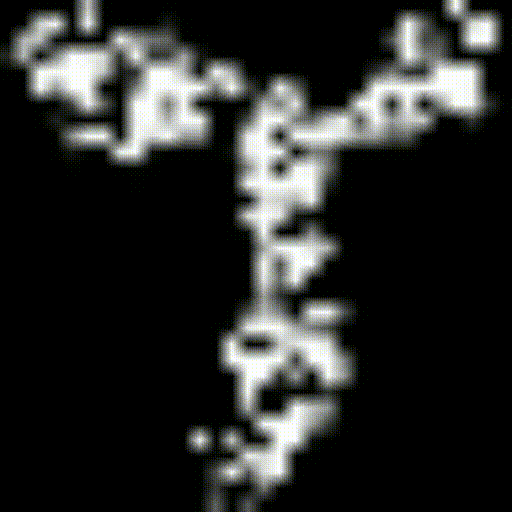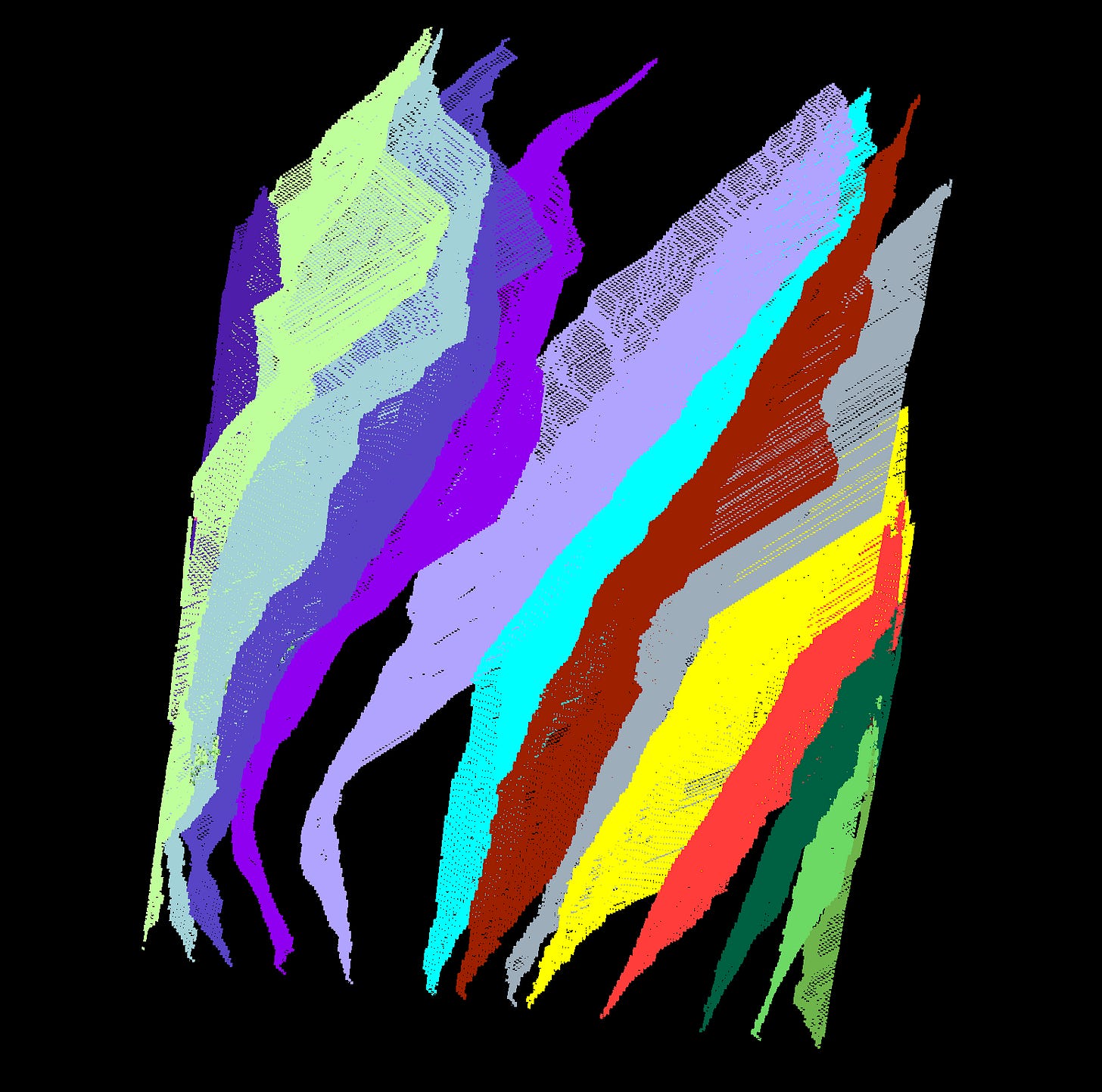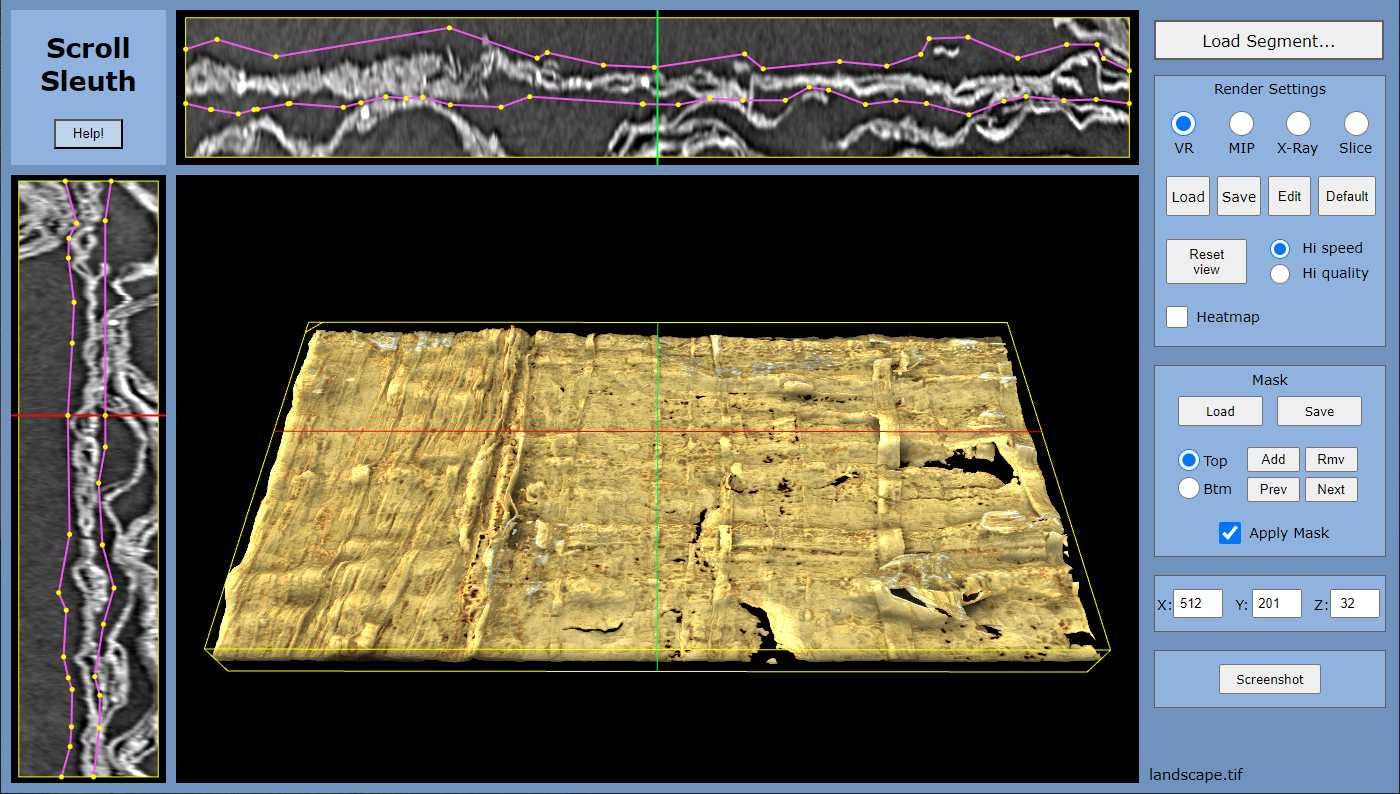It’s been another exciting month for contributions for the Vesuvius Challenge, with new tools and techniques being developed to uncover the mysteries of the Herculaneum scrolls. This month, we’re thrilled to announce a total of $48,500 in awards for innovative projects that are making a real difference in unlocking these ancient texts. These contributors are pushing the boundaries of what’s possible and helping us get closer to our goal of reading 90% of four scrolls!
September Progress Prizes
Let’s take a closer look at the submissions that earned awards this month:
1 x $20,000 (Gold Aureus)
Sean Johnson / @sean (bruniss) has proposed a new auto-segmentation method that could transform how we approach segmentation. By tracking fibers to follow the kollema1 that make up the scroll, Sean’s technique has great potential to improve segmentation speed and accuracy. We are thrilled that Sean decided to share his approach early. His discovery has already sparked a flurry of collaboration. In addition to the repository linked above, check out the writeup found there for more information and context.
We’re excited to see how this further develops!
1 x $10,000 (Denarius)
Youssef Nader / @YoussefNader is working on multiple fronts. His first submission, Inkalyzer, uses explainable AI to break down ink model predictions, helping us understand what signals these models are detecting:
Youssef is winning another $2,500 with a second project. It focuses on segmentation, ink detection and iterative labeling on the scroll fragments. It is designed to improve ink detection for Fragment 5, likely detached from Scroll 4. This approach aims to grow the training datasets available for ink detection, ultimately increasing ink detection performance for the intact scrolls as well as the fragments.
Furthermore, we are happy to announce that Youssef has joined the Vesuvius Challenge Team! He will focus on improving open source ink detection. The prizes won for September are based on contributions made and submitted before joining the team.
4 x $2,500 (Sestertius)
Hendrik Schilling / @waldkauz has made great progress with the Volume Cartographer segmentation tool. Hendrik’s branch now offers fast meshing and flattening for scroll segments. We are looking forward to the day when his improvements are integrated and actively used by our segmentation team!
Hendrik is receiving another $1,000 prize for his work on automatically improving the quality of existing segmentations. (Discord)James Darby / @james darby has refined a tool to create manifold meshes2 from volumetric instance labels.
James is winning another $1,000 for significant improvements to his Volumetric Vesuvius Labelling tool, which focuses on enhancing label visibility and usability. It is a pleasure seeing James work on his segmentation tools, incorporating user feedback and bug reports quickly.
Johannes Rudolph / @jrudolph has delivered a substantial update to his scroll and segment viewer. vesuvius-gui now also allows users to browse flattened segments directly from the internet, viewing and inspecting any segment in the context of the scroll volume, making it easier to spot flaws or other segmentation properties in the cross-section views.
Jorge García-Carrasco / @jgcarracsco and Andoni Irazusta-Garmendia / @theleprechaun25 have shown that Self-Supervised Learning for Ink Detection can improve our understanding of ancient scrolls. Their model, combined with a detailed roadmap of experiments, sets a foundation for future innovations in this space.
4 x $1,000 (Papyrus)
Paul Geiger / @PaulG continues to improve his Scroll Sleuth web app. With unique display modes, this tool allows us to see ink in a new light.
William Stevens / @Will Stevens has been refining his algorithms for automatically segmenting small surfaces. A detailed report of his work this month is available.
Chuck / @khartes_chuck has made continued progress on the khartes3d-beta branch of the Khartes tool, which is used for manual segmentation of scroll data. His work in September included several quality-of-life updates, like streaming data directly from our dataserver3 without managing local downloads.
Seth Stewart / @pygosceles has made first attempts at generating data for Vesuvius Ink Generator, a project aimed at inspecting what signals an ink detection model identifies within volumetric scroll data.
Thank you to all contributors for your hard work! If you’re working on scroll tools or have an idea for a new approach, don’t forget to submit a pull request to awesome-scroll-tools. Your work could be the key to unlocking more of the Herculaneum scrolls.
State of the Art in Auto-Segmentation
The Vesuvius Challenge Team specialized in segmentation, Julian Schilliger / @RICHI and Giorgio Angelotti / @Jordi, further improved the state of the art in auto-segmentation. Have a look at their most recent unrolling attempts for Scroll 1. We are working on dialing in the segmentation accuracy such that the text is more legible, but one thing is clear: there is much more ancient text in this data, waiting to be discovered!
A kollema is a single papyrus sheet. Multiple kollemata are glued together at the kollesis (overlap) to form a longer sheet that is rolled into a scroll.
A manifold mesh is a 3D shape where every part connects smoothly without gaps or overlaps, making it easier to visualize and analyze objects like the scrolls.
Make sure to fill out the registration form before visiting the data server (LICENSE).










